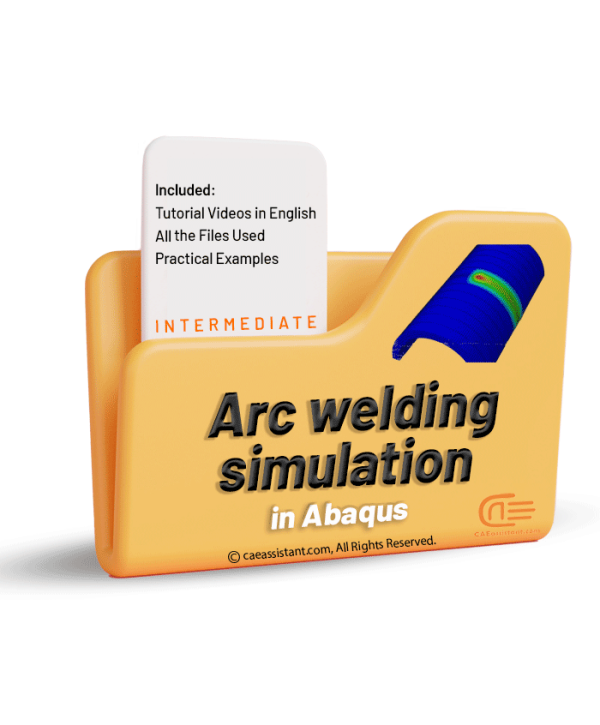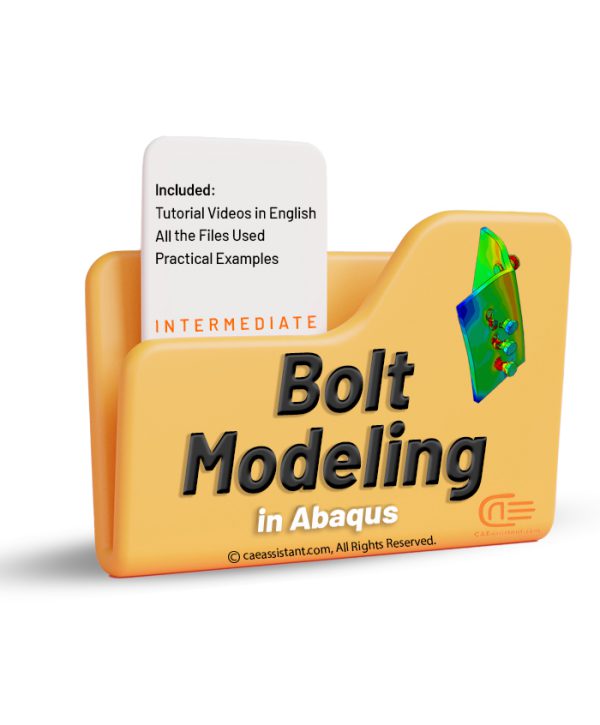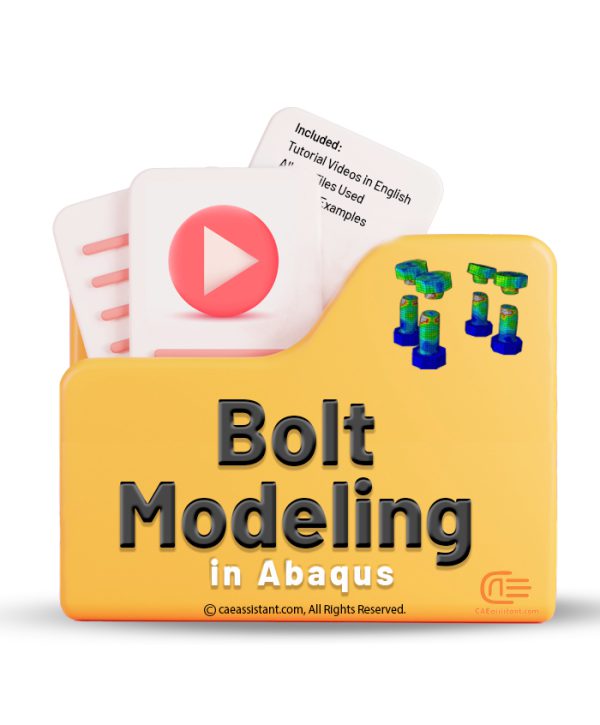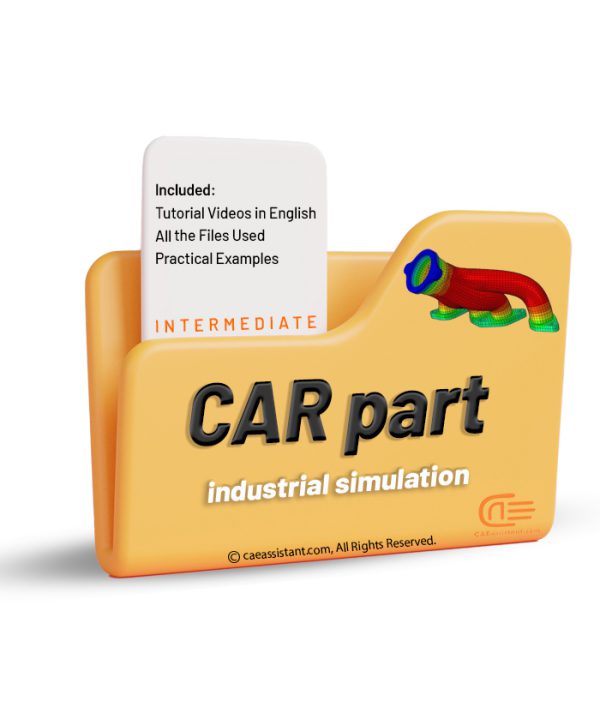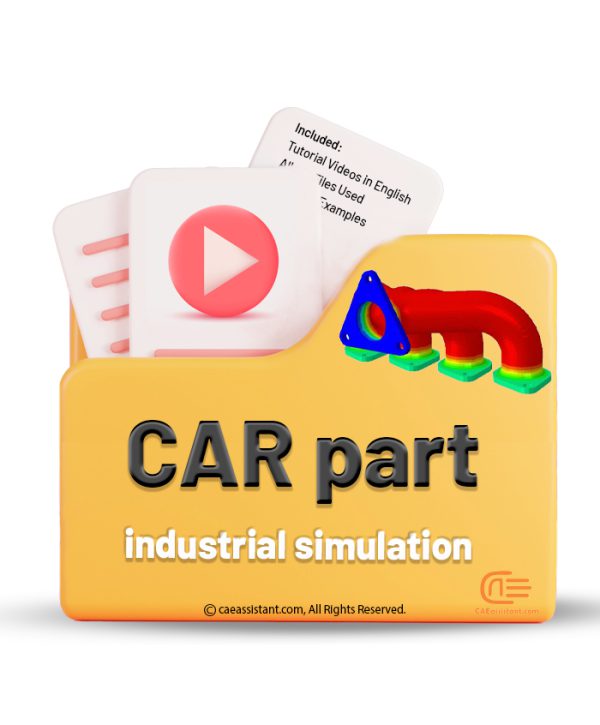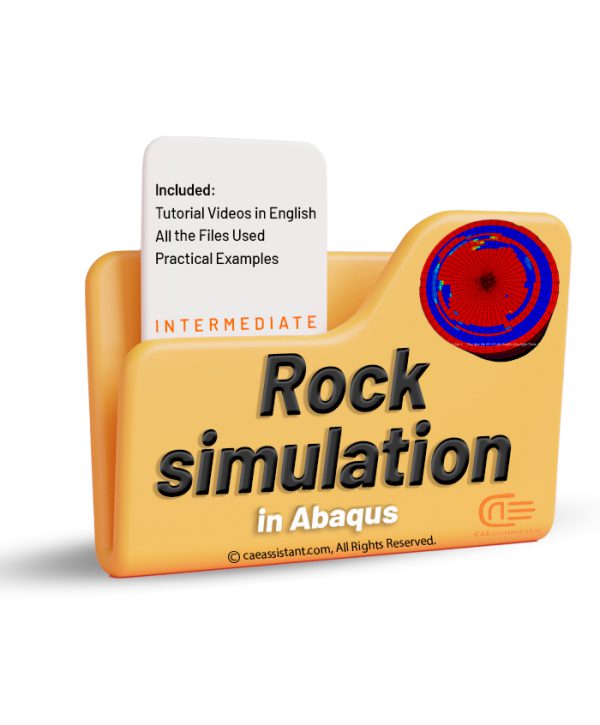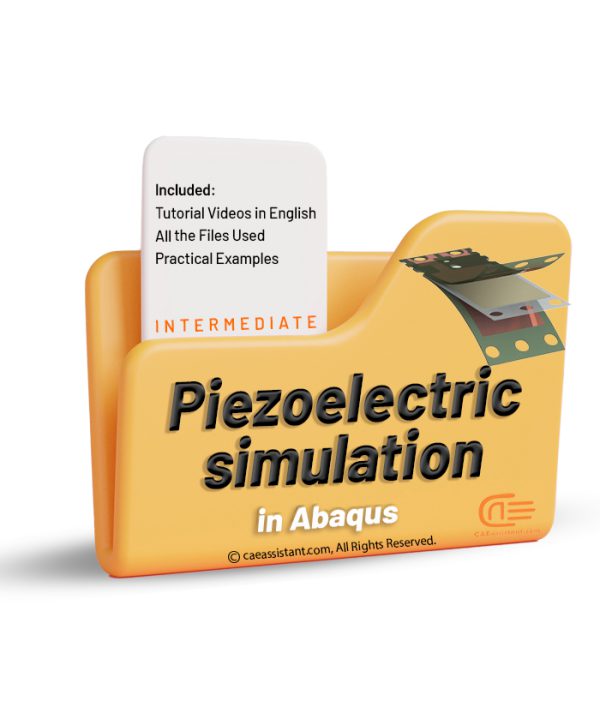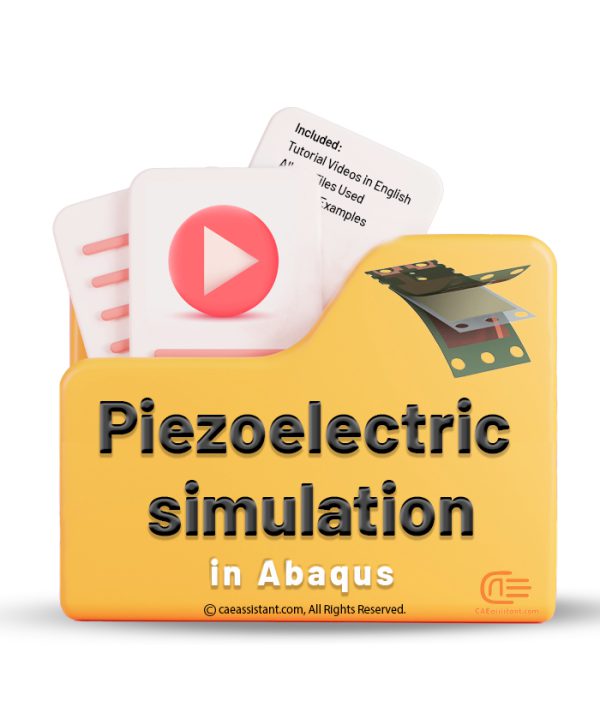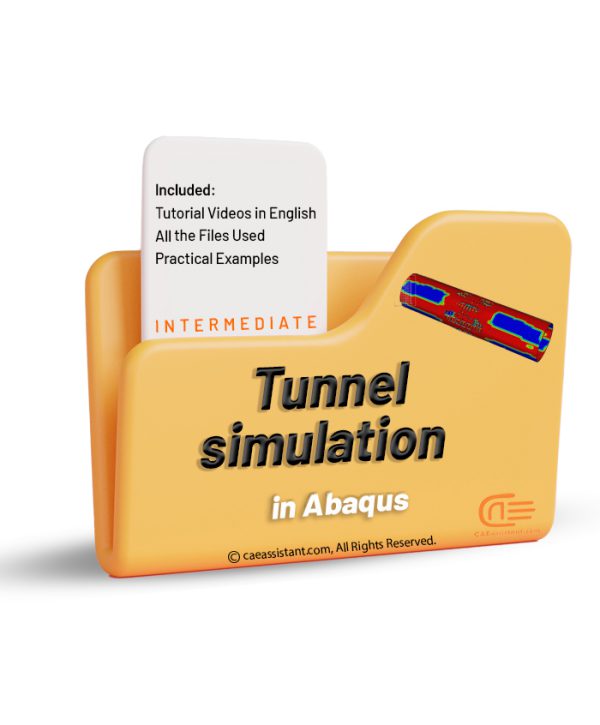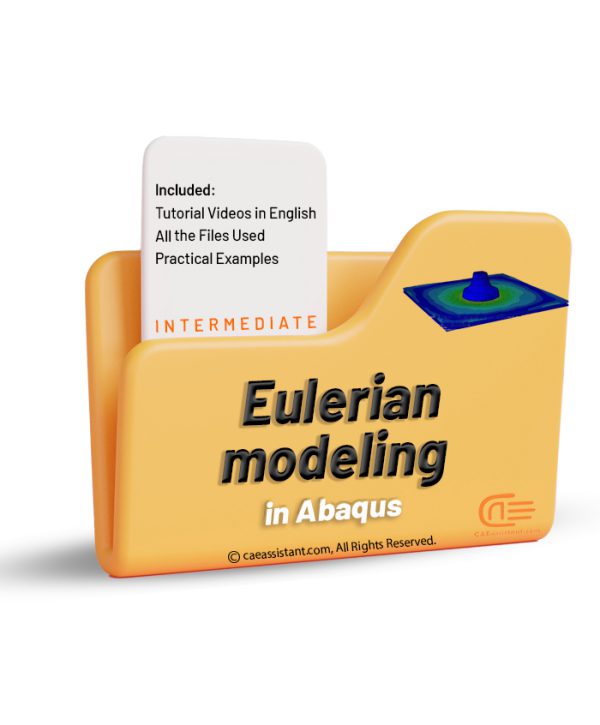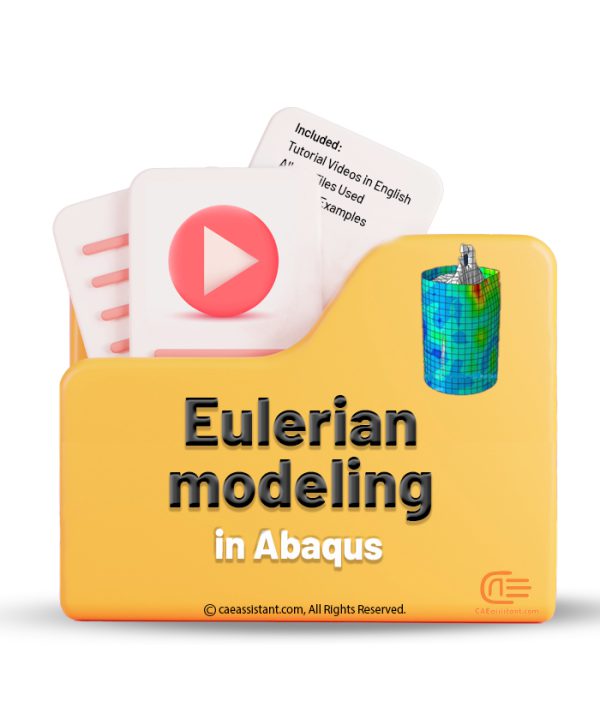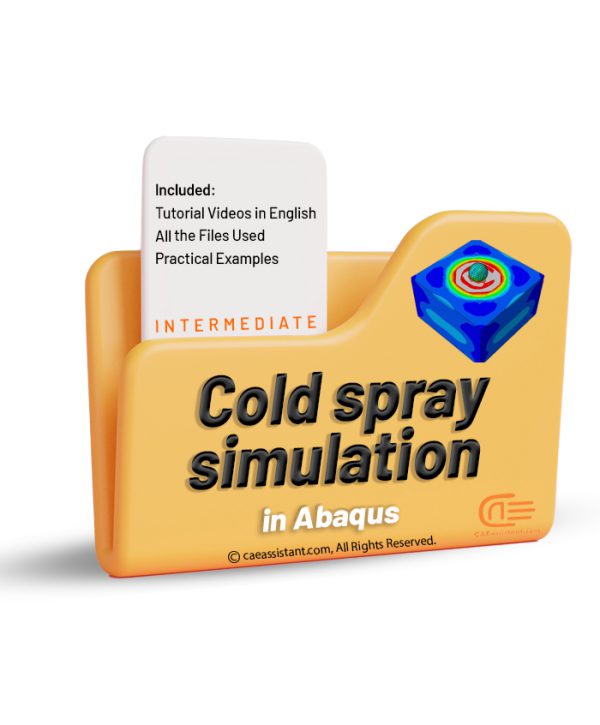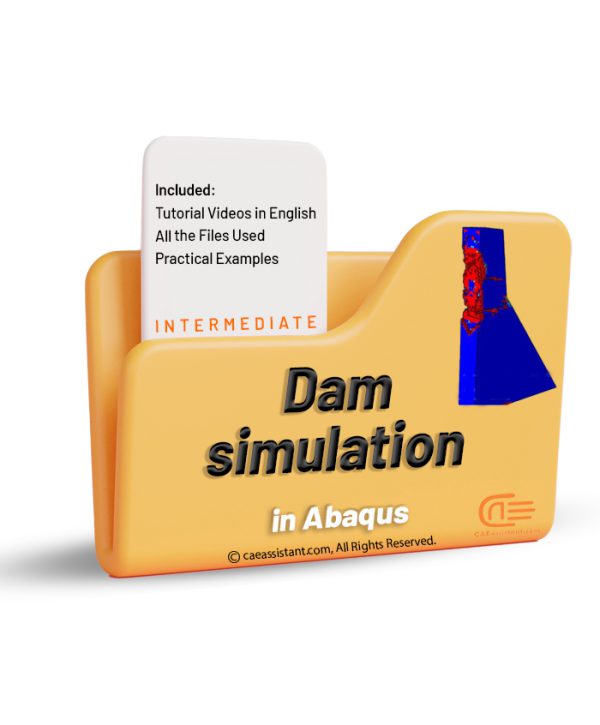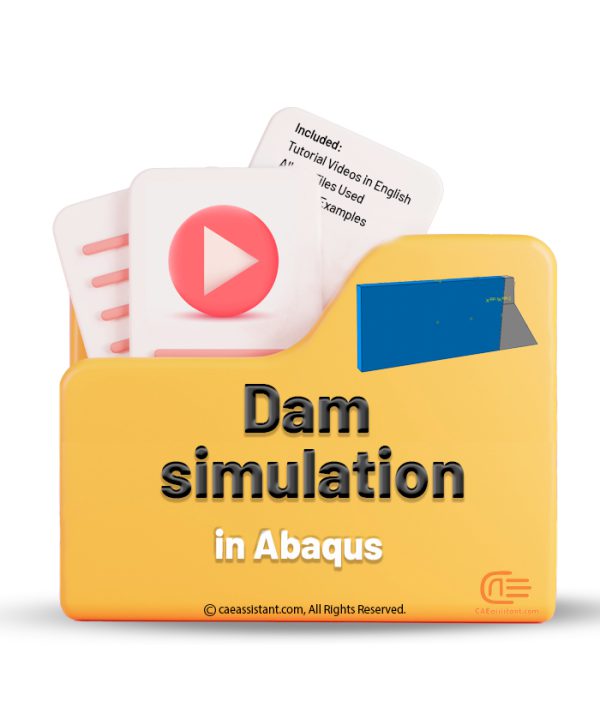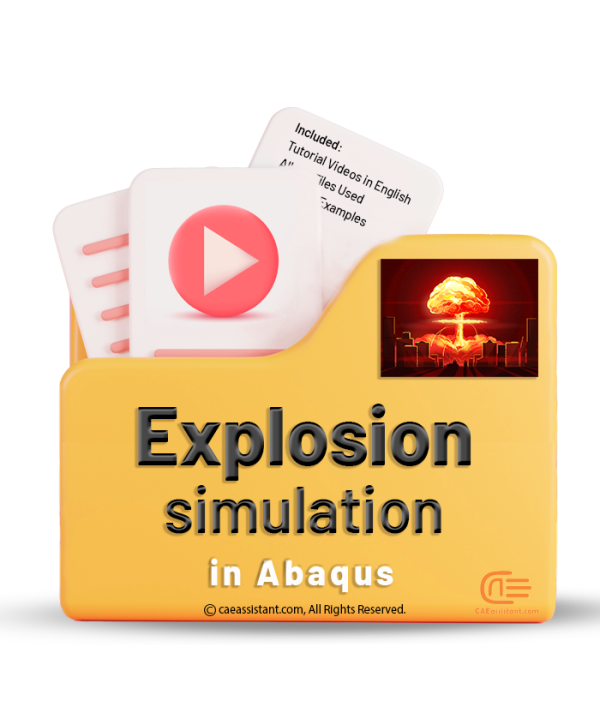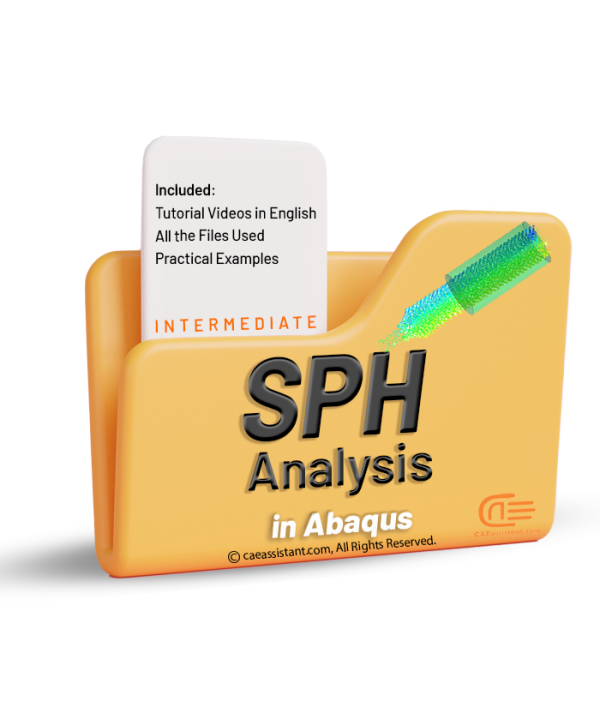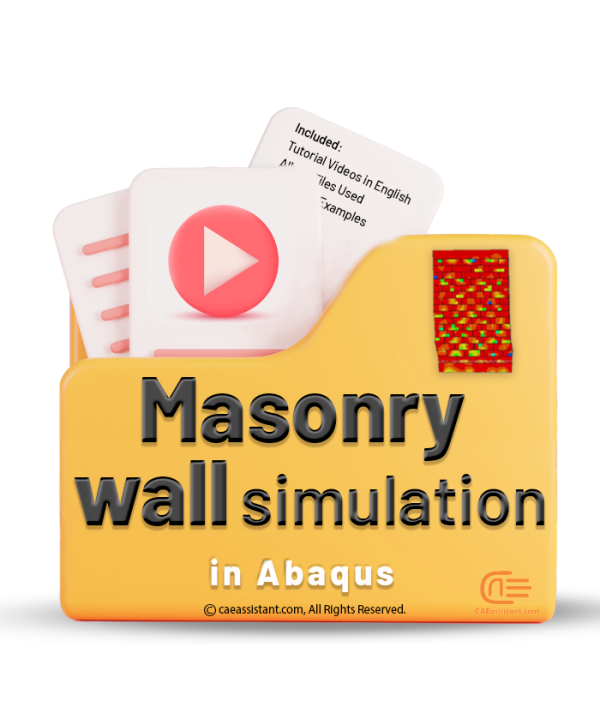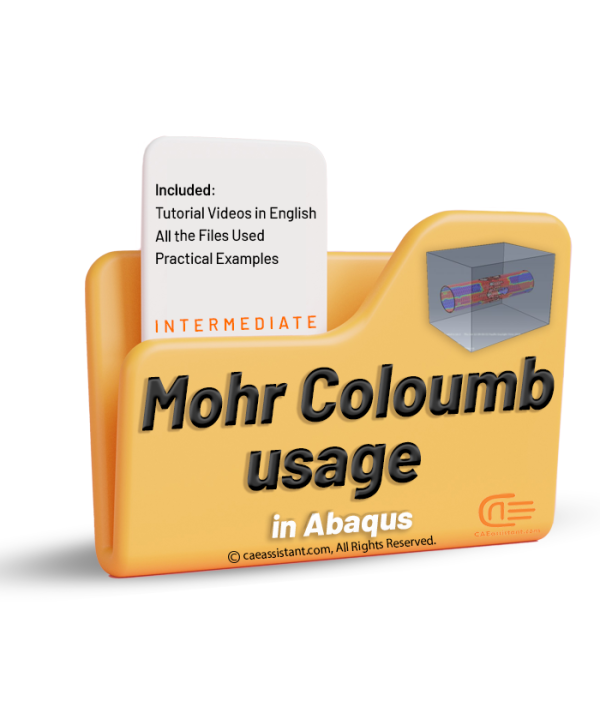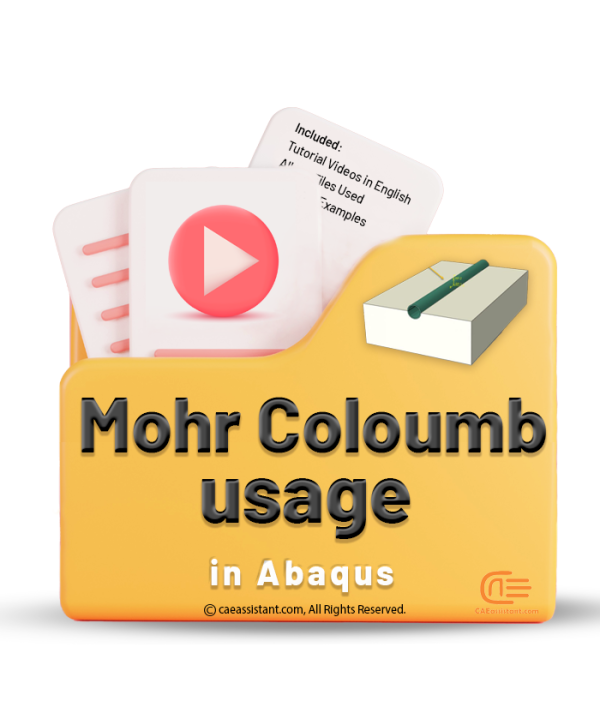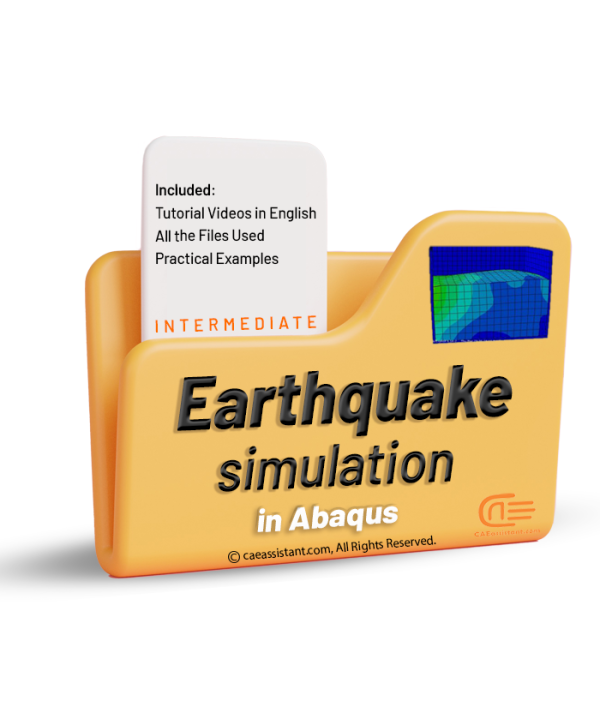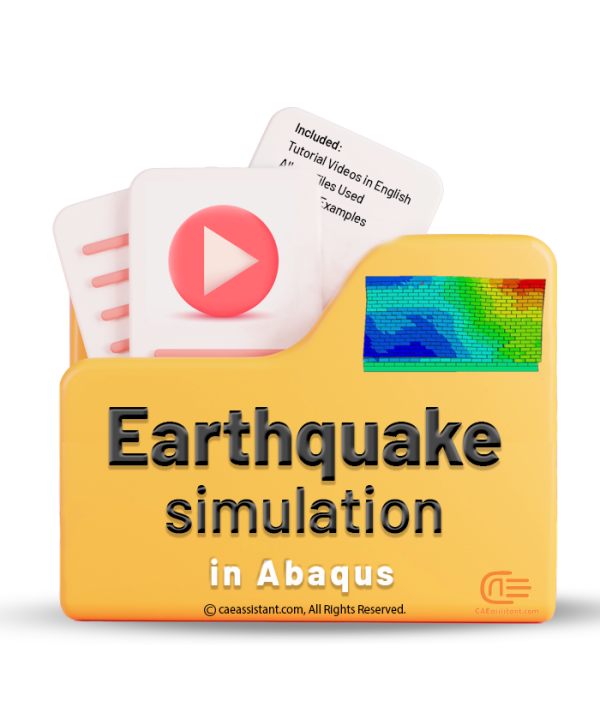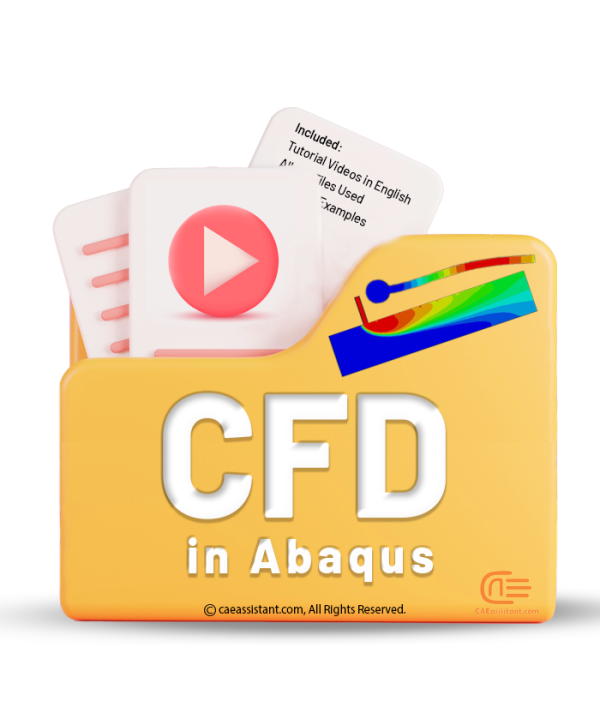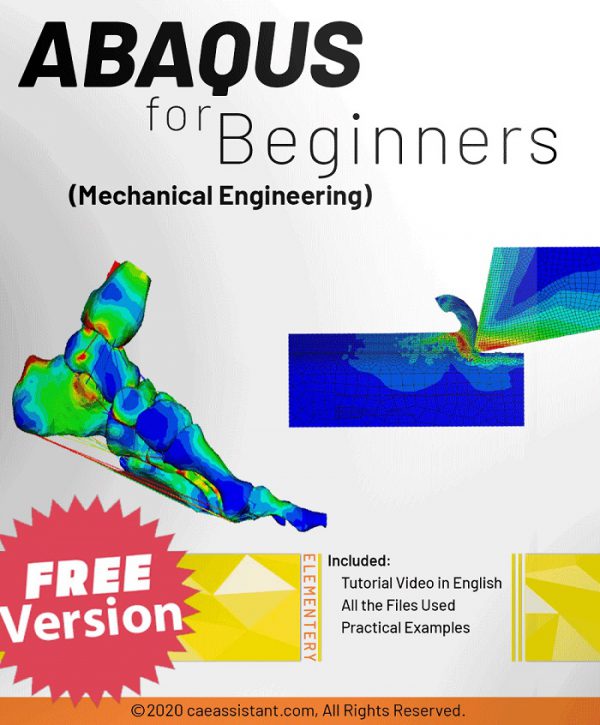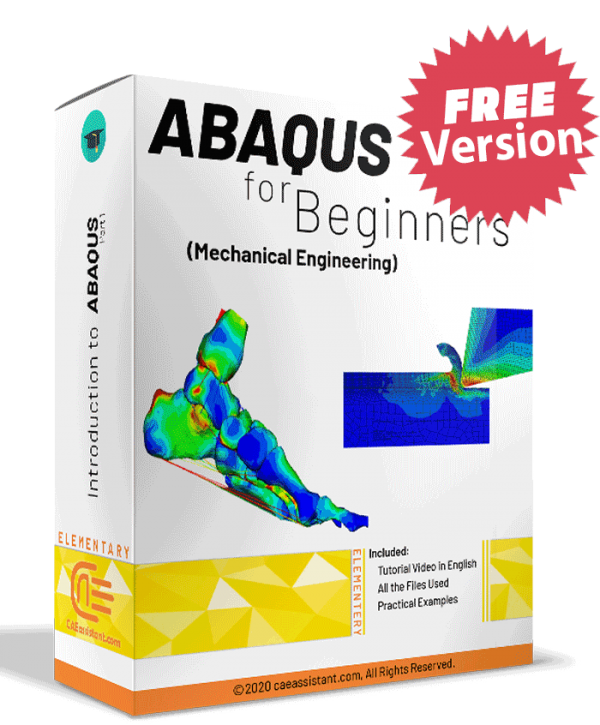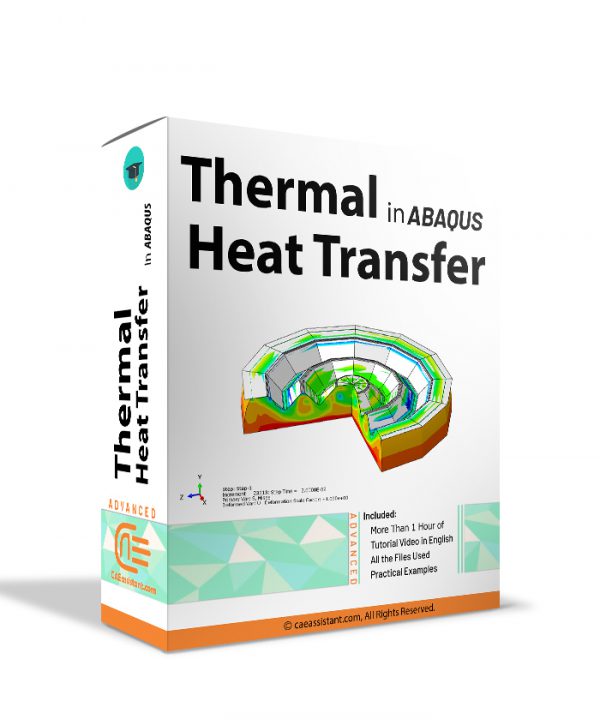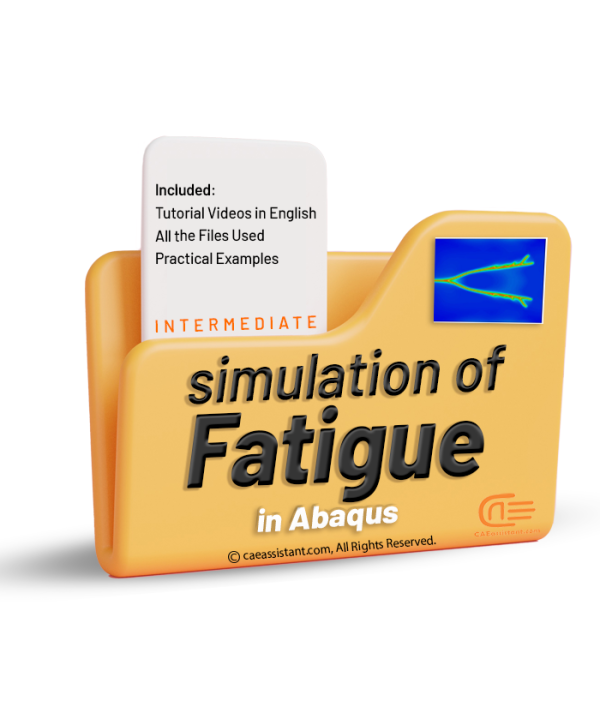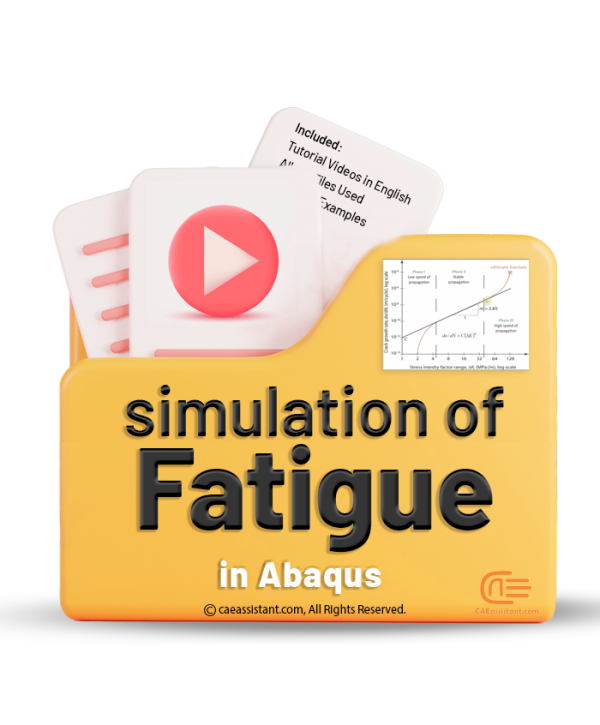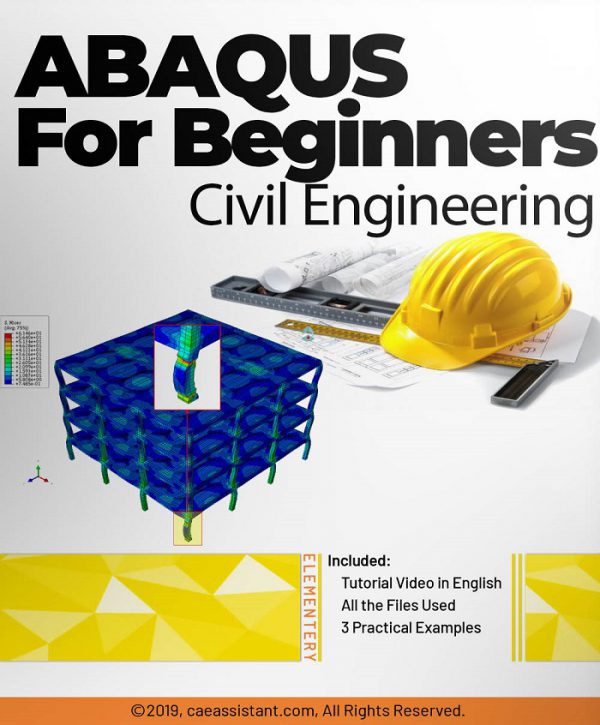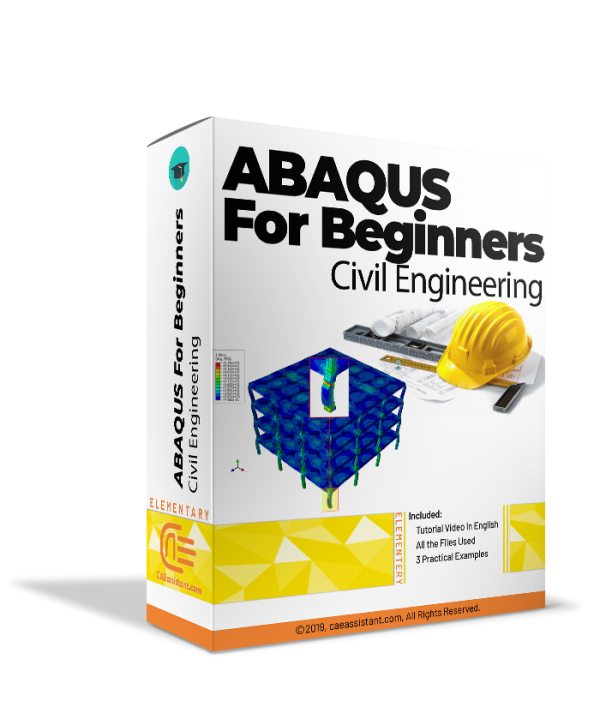Beginners
ADVANCED ABAQUS SUBROUTINE COURSE
Gain mastery over complex engineering challenges in Abaqus through this comprehensive course focusing on advanced subroutines. Enhance the software’s capabilities and create highly tailored simulations.
Explore in-depth functionalities such as UMAT, VUMAT, USDFLD, VUSDFLD, UHARD, VUHARD, UMATHT, and UHYPER to develop unique material models, define hardening characteristics, simulate thermal effects, and manage internal heat generation using HETVAL.
Extend beyond standard features with DLOAD, VDLOAD, DFLUX, and VDFLUX to handle intricate loading scenarios and variations in heat flux. Implement time-dependent loads and boundary conditions with UAMP, VUAMP, DISP, and VDISP.
Take control with UMESHMOTION for mesh movement, and utilize UEL and VUEL for complex element behavior. Address complex friction scenarios with VFRICTION and VFRIC, and manage custom outputs and thermal strains using UVARM, VUVARM, UEXPAN, and VUEXPAN.
This course is designed for proficient Abaqus users aiming to push the boundaries of simulation capabilities and effectively solve real-world engineering challenges beyond conventional methods.
COMPREHENSIVE ABAQUS TUTORIAL FOR CIVIL ENGINEERS
This comprehensive online course provides a robust skillset for civil engineers. Gain expertise in foundational Abaqus techniques, explore advanced modeling of concrete and soil, master fluid and dam analysis, study tunnel excavation and stability, and learn fastener modeling alongside material damage and fracture techniques (CRC & XFEM). Develop the ability to design intricate structures and analyze diverse materials such as concrete, soil, and steel through advanced simulations. Whether you're new to Abaqus or an experienced specialist, this course is designed to equip you with the tools needed for real-world civil engineering projects.
Upon completion, you will possess the skills to confidently tackle complex civil engineering challenges using Abaqus, including advanced topics like subroutines and scripting. The course thoroughly covers Abaqus tutorials and finite element methods pertinent to civil engineering.
COMPREHENSIVE ABAQUS COURSE FOR MECHANICAL ENGINEERING
The Finite Element Analysis (FEA) course provides mechanical engineers with a comprehensive grasp of FEA using Abaqus. Our meticulously designed curriculum covers both the theoretical aspects and practical applications of the method.
You will learn to master implicit and explicit analysis techniques and become proficient with Abaqus software's user-friendly interface. Through hands-on experience, you'll tackle various FEA simulations, including static analysis (stress, strain, deformation), dynamic analysis (vibration, natural frequencies), heat transfer analysis, composite material analysis, buckling and frequency analysis, and coupled temperature-displacement analysis. Expert guidance in post-processing will enable you to derive valuable insights and solve engineering problems efficiently and accurately.
No need to search further! Our FEA course offers all the essential components: proven content, clear instruction, and practical practice. Quickly learn and apply FEA skills – success is within your grasp.
Arc welding simulation in Abaqus
Notice: This package will be available one week after purchase.
Arc welding is a fusion process that involves joining metals by applying intense heat, causing them to melt and mix. The resulting metallurgical bond provides strength and integrity to the welded joint. Arc welding is widely used in various industries for fabricating structures and components. Arc welding simulation in Abaqus is essential for optimizing the welding process and ensuring high-quality welds. It allows engineers to predict and analyze factors such as temperature distribution, residual stresses, distortion, and microstructure evolution during welding. By accurately simulating the welding process, parameters like welding speed, heat input, and electrode positioning can be optimized to achieve desired weld characteristics and minimize defects.
Bolts and joints play a vital role in the stability and structural integrity of various engineering structures, including buildings, bridges, and machines. Bolts are used to fasten or connect different components together, providing a means of transferring loads and ensuring the continuity of load paths. Joints connect structural elements, allowing them to move and deform while maintaining their overall stability. Proper design and selection of bolts and joints are crucial to ensuring the safety and durability of the structure. Factors such as the type of load, the materials used, and the environmental conditions must be considered when selecting bolts and joints. Failure to properly design and install bolts and joints can result in catastrophic failure of the structure. In this package, you will learn how to model bolts and joints, simulating the failure of connections and other things with practical examples.
Car part industrial simulation
Car industrial parts are complex and critical components that play a vital role in the operation of a car. Two such parts are the exhaust manifold and the internal combustion engine (IC engine). The exhaust manifold directs hot exhaust gases from the engine's cylinders into the exhaust system and is typically made of cast iron or stainless steel. The IC engine converts fuel into mechanical energy by burning fuel in a controlled explosion within the engine cylinder. High temperatures and pressures must be considered in the design, and the components must be made of durable materials that can withstand the stresses of constant combustion. Therefore, it is important to know how these parts respond under different loading conditions to have the best design possible. In this package, there are two workshops to help you with this job: Heat transfer analysis in an exhaust manifold and Thermomechanical analysis of an exhaust manifold.
Rock simulation is essential for evaluating the behaviour of rock masses under various loading conditions, such as earthquakes, landslides, and blasting. It enables engineers and geologists to assess the stability and integrity of rock structures, predicts potential failure modes, and develop effective mitigation strategies. Rock simulation is crucial in the design and planning of mining operations, tunnels, and underground constructions to ensure the safety and longevity of the structures. It also plays a vital role in assessing the seismic hazard of an area and evaluating the potential impact of earthquakes on the built environment. In this package, you will learn how to do an impact simulation on a granite stone using the JH-2 model; also an explosion simulation inside a rock for excavation purposes. You can learn more detail in the description of the workshops.
Piezoelectric simulation in Abaqus
Piezoelectric materials are unique materials that generate an electric charge in response to applied mechanical stress, such as pressure or vibration. They are used in a wide range of applications, including sensors, actuators, and energy harvesting devices. The piezoelectric analysis is the process of studying the mechanical and electrical behavior of piezoelectric materials under various loading conditions. It involves modeling and simulating the response of piezoelectric materials to external stimuli, such as electrical potential or mechanical stress. The importance of piezoelectric analysis lies in its ability to evaluate the performance and optimize the design of piezoelectric devices, which are becoming increasingly important in various industries, including medical, automotive, aerospace, and energy. Piezoelectric analysis can help improve the efficiency, accuracy, and durability of piezoelectric devices, leading to advancements in technology and innovation. In this package you will learn how to model piezoelectric materials in Abaqus.
A tunnel is an underground or underwater passage for transportation, utility lines, or water pipelines. Tunnels are critical infrastructure, and their safety and reliability are essential for ensuring public safety and the smooth functioning of society. Tunnel simulation involves using computer models to predict the behaviour of tunnels under different types of loading conditions, such as earthquakes, floods, or explosions. These simulations can help engineers and policymakers assess the safety and reliability of tunnels, identify potential failure modes, and develop strategies to mitigate risks. By using advanced simulation techniques, engineers can better understand the complex behavior of tunnels and design more effective and durable structures. Tunnel simulation is an essential tool for ensuring the safety and resilience of tunnels and the infrastructure they support. Some workshops are presented in this package to teach you how to simulate and analyze tunnels in Abaqus; two of these workshops are Damage analysis of an underground box tunnel subjected to surface explosion and Tunnel dynamic analysis subjected to internal blast loading using CEL method.
Eulerian Abaqus and CEL modeling
The Eulerian method is a numerical technique used to analyze fluid mechanics problems. In this approach, the fluid is treated as a fixed grid, where the nodes remain stationary while the fluid flows through them. The Eulerian Abaqus method can be used to analyze fluid-structure interactions, such as fluid impact on structures or the behavior of fluids in containers. To use the Eulerian method in Abaqus, the desired geometry must first be meshed using Eulerian elements. The material behavior of the fluid is then defined using appropriate equations of state. Finally, the boundary conditions and loading are applied, and the system is solved using the appropriate numerical method, such as the finite element method. This package will teach you how to use this method and various practical examples. Also, this package covers several practical examples in Abaqus CEL method.
Cold spray & Shot peening simulation in Abaqus
Cold spray is a process used to deposit materials onto a substrate by accelerating fine powder particles to high velocities using compressed gas. Upon impact with the substrate, the particles undergo rapid plastic deformation, disrupting surface oxide films and promoting bonding between metal surfaces. Unlike thermal spray processes, cold spray avoids thermal degradation and partial oxidation of the coating material, resulting in coatings with low porosity and oxygen content. The process is highly efficient, with deposition efficiencies often exceeding 90%. Shot peening is a metal treatment process that involves bombarding a surface with small, round metallic (usually steel), ceramic, or glass beads at high velocity. This process creates small indentations on the surface, which in turn introduces compressive residual stress into the material. These two processes are different and use for separate purposes but their simulations are the same.
Cold spray is particularly important in applications where thermal degradation or oxidation of the coating material is a concern or where the coating is required to be thick and free from defects. In this package, you will learn how to simulate this process with different methods, such as ALE and SPH, with different materials. For example, Cold spray simulation of steel particles impacts on the Inconel target using ALE method.
A dam is a large concrete or earthen barrier built across a river or other waterway to create a reservoir for storing water. Dams are critical infrastructure for providing water for irrigation, drinking, and hydroelectric power generation. However, they are also susceptible to damage from natural disasters and human-made threats, such as earthquakes, landslides, and terrorist attacks. Abaqus can predict the behavior of dams under different loading conditions, including earthquakes, floods, and explosions. It also can model the interaction between the dam, water, and soil, making it a comprehensive and powerful tool for dam engineering. In this package, you will learn how to model dams in different conditions, such as dam simulation subjected to earthquakes in interaction with water and soil and dam simulation subjected to an underwater explosion.
An explosion is a rapid and violent release of energy, usually accompanied by a loud noise, heat, and pressure waves. Explosions can be caused by a variety of factors such as chemical reactions, combustion, nuclear reactions, or mechanical failure. Explosions can cause severe damage to buildings, infrastructure, and human life. To minimize the impact of such incidents, accurate and reliable simulation of explosions is crucial. Explosion simulation involves modeling the complex interactions of blast waves, shock waves, and debris with the surrounding environment. By simulating explosions, engineers and scientists can identify potential risks and develop effective safety measures. In this package, you will learn how to model explosions in different situations with practical examples, such as Air blast explosion simulation inside an RC room and Subsurface explosion simulation on buried steel pipelines.
9 Practical Workshops for SPH in Abaqus💡 | Abaqus SPH Tutorial
Smoothed Particle Hydrodynamics Tutorial: Abaqus SPH (Smoothed Particle Hydrodynamics) is a numerical method used in this software to model fluid-structure interaction problems. SPH in Abaqus is a meshless approach that uses a set of particles to discretize the fluid domain. The Abaqus SPH modeling tutorial is particularly useful for problems with large deformations, fragmentation, and free surface effects.
It can be used in combination with other Abaqus features, such as finite element analysis, to model coupled fluid-structure systems. This Abaqus SPH tutorial, created by CAE Assistant group, can help you understand and apply this method through practical examples, some of which include projectile impact simulation on a cementitious material, TNT explosion simulation inside a rock using the SPH method, bullet movement through a water pipe in Abaqus, and bird strike simulation in Abaqus.
Masonry wall Abaqus simulation
The term masonry can refer to the construction materials brick, stone, etc. An assembly of masonry units, such as concrete blocks, burnt clay bricks, sundried bricks, stone bricks, and natural stones, linked together with mortar or grout is referred to as a masonry wall. It is important to know how these structures behave under different loading conditions, such as explosion, tension, earthquake, etc. to have the best design. In this package, you’ll learn all of that in four workshops: Behavior of a masonry wall under a couple Eulerian-Lagrangian explosion, micro modeling of a masonry wall, modeling of reinforced bricks masonry beams using GFRP reinforcement, earthquake simulation over masonry wall.
Geostatic Relates to the pressure exerted by the earth or similar substance. Total stress at a point due to the combined weight of the soil or rock (solids plus water) and the load on the foundation is called Geostatic stress. Geostatic analysis is used in cases such as earthquakes, designing a dam, analyzing the foundation of a structure, etc. In this package, three workshops are presented to learn the Geostatic analysis: The first workshop analyzes a water column broke under the weight of gravity, the second workshop simulates an earthquake load over a gravity dam in contact with water and dirt, the last workshop models cylindrical tank's water sloshing phenomenon.
A mathematical model called the Mohr-Coulomb theory describes how brittle materials, such as concrete or rubble piles, react to both shear stress and normal stress. This rule is followed by the majority of traditional engineered materials in at least some of their shear failure envelope. In this package, you will learn how to use this theory in four practical examples: Analysis of surface explosion damage to an underground box tube in ABAQUS, dynamic analysis of a tunnel in soil subjected to internal blast loading, An internal explosion-related numerical simulation of the behavior of a pipeline's damage mechanics, and for cases utilizing crashworthiness, simulate an Eulerian method to soil impact analysis.
Earthquake simulation in Abaqus
It is known that an earthquake is a disastrous event that can cause great damage to buildings, structures, and even people. So it's essential to know how a structure will behave when subjected to an earthquake. Therefore engineers must take into account the possibility of an earthquake when designing a structure. With finite element analyses, engineers can predict the behaviour of structures under earthquake loading. With this method, they can determine the best way to design a structure to withstand an earthquake. In this package, you can learn how to do earthquake simulation in Abaqus to have the best design for your structure to save human lives. Three practical examples are presented to you to start simulating earthquakes: “simulating an earthquake over a gravity dam in contact with water and soil”, “simulating an earthquake load over a water-filled tank”, “Abaqus-Micro model simulation of seismic load over masonry wall (concrete brick)”.
Fluid-Structure Interaction also known as FSI is a multiphysics problem where the fluid and structure are coupled. The fluid flow can cause the structure to deform, and the deformation of the structure can affect the flow. So when you want to design something, you need to know how the structure will deform and how that deformation affects the flow. Common examples of FSI analysis are airplanes, cars, spacecrafts, and buildings. Other examples like junctions in piping systems, or the human circulatory system. CFD is a branch of research that uses numerical methods to solve the mathematical equations governing fluid flow, heat transfer, mass transfer, chemical reactions, and related phenomena. In Abaqus, you can model both methods. In this package, we present to you three workshops to get you started with Abaqus CFD and FSI: “Using Abaqus CFD methods, examining heat mixing and reverse flow characteristics in a T-junction”, “impact of air velocity over the short column”, “simulate fluid structure interaction on an aluminum body with a flexible tail in Abaqus”.
Abaqus for beginners (Mechanical Engineering)-Free Version
In this Free version of the training package, which is designed for beginners in mechanical engineering, two lessons from the original package are presented. This package is provided the necessary points and theories for simulation. With this training package, you will be able to get acquainted with different ABAQUS modules in the form of various examples in modeling, how to get the output and the necessary results for reporting. You can download the syllabus of this package here. You also could find the demo of the package on our YouTube channel at this link.
Thermal Heat Transfer in Abaqus
This package is related to Thermal Analysis in Abaqus. This package helps Abaqus users to simulate professionally.
In general, Abaqus can solve the following types of heat transfer problems (For thermal and thermo-mechanical problems):
- Uncoupled heat transfer analysis
- Sequentially coupled thermal-stress analysis
- Fully coupled thermal-stress analysis
- Adiabatic analysis
This Abaqus fatigue tutorial package includes workshops that teach you the XFEM method to simulate crack growth. This tutorial package enables you to model crack propagation in any 2D and 3D dimensional model. In addition, you will learn about the Paris law, direct cyclic approach, traction-separation law, and other theories that help you to simulate a crack growth problem in this package
💿Abaqus for Beginners (Abaqus for Civil Engineering)
In the present Abaqus tutorial for civil engineering package, we, "The CAE Assistant", have presented all the Abaqus basic skills that a civil engineer needs when he/she wants to use his/her engineering knowledge in computer-aided designing. Abaqus tutorial for civil engineering covers all your need to simulate concrete, reinforcements, buckling, frequency, damage, composite, cohesive and more topics related to Abaqus structural analysis tutorial. You can watch the demo video for more information.
If you need common industrial simulations in the fields of forming, fracture, explosion, impact, etc., this package can provide you with comprehensive training along with an instructional video file and software file. You can quickly meet your educational needs in learning the elementary and intermediate level of Abaqus software using this package.



